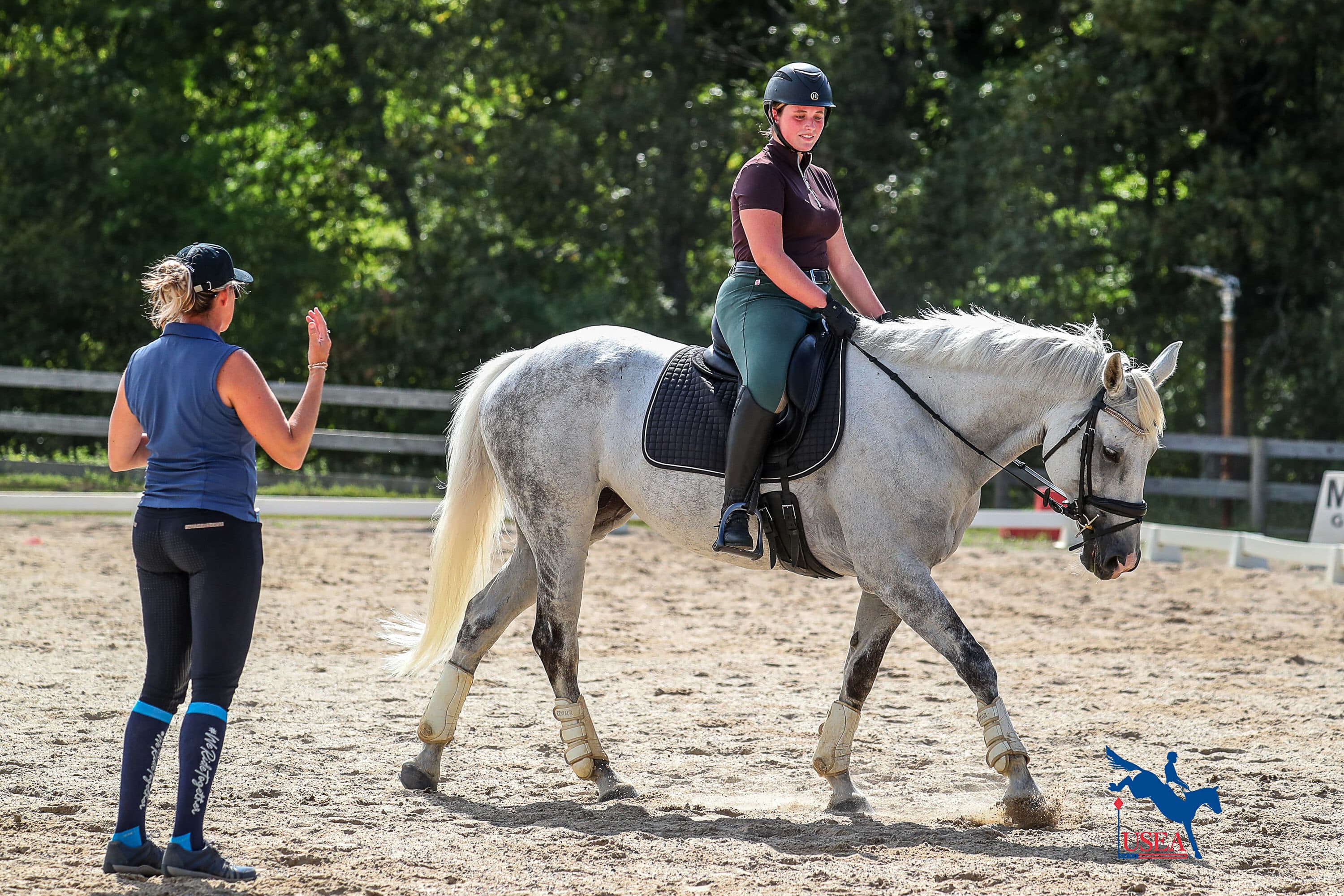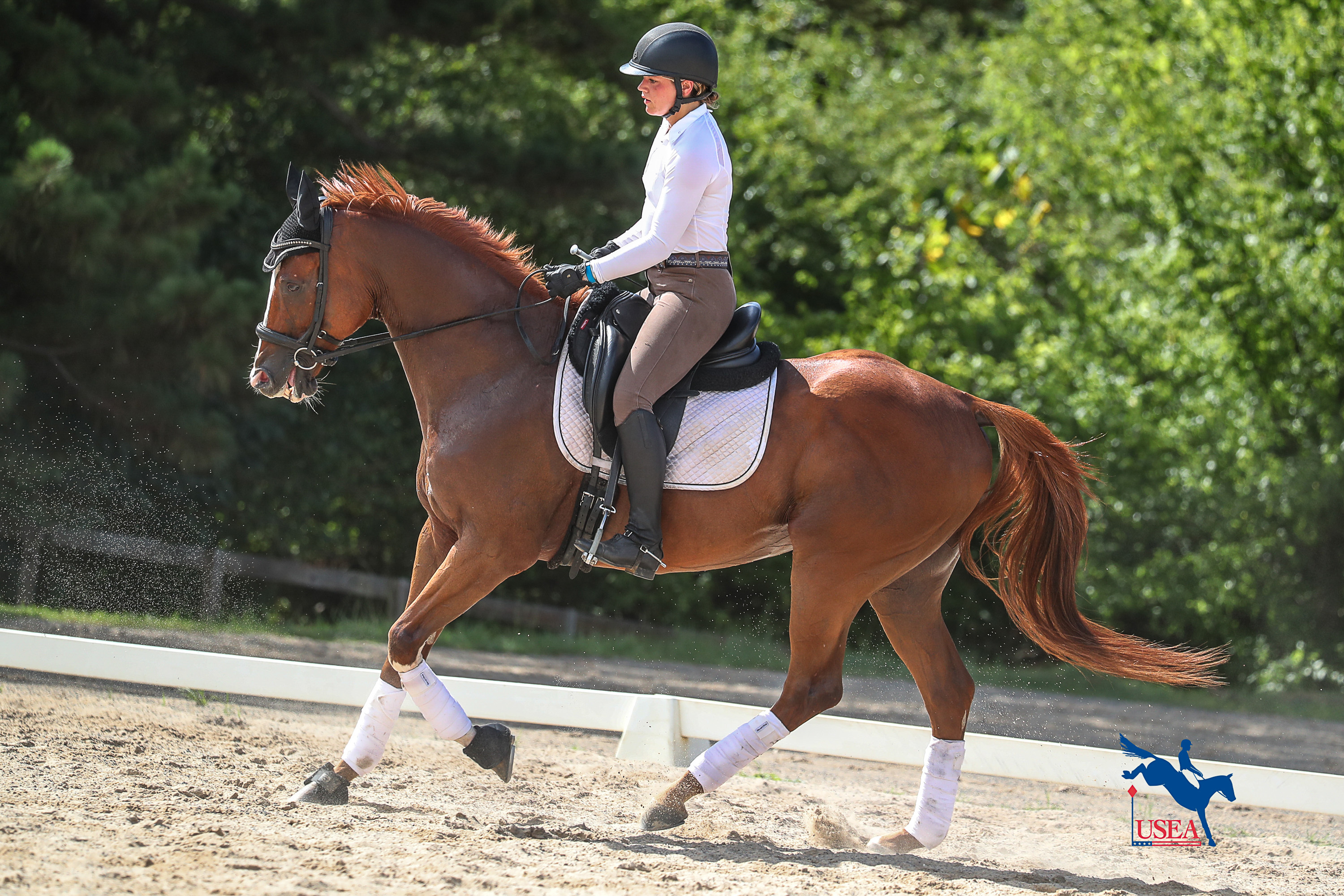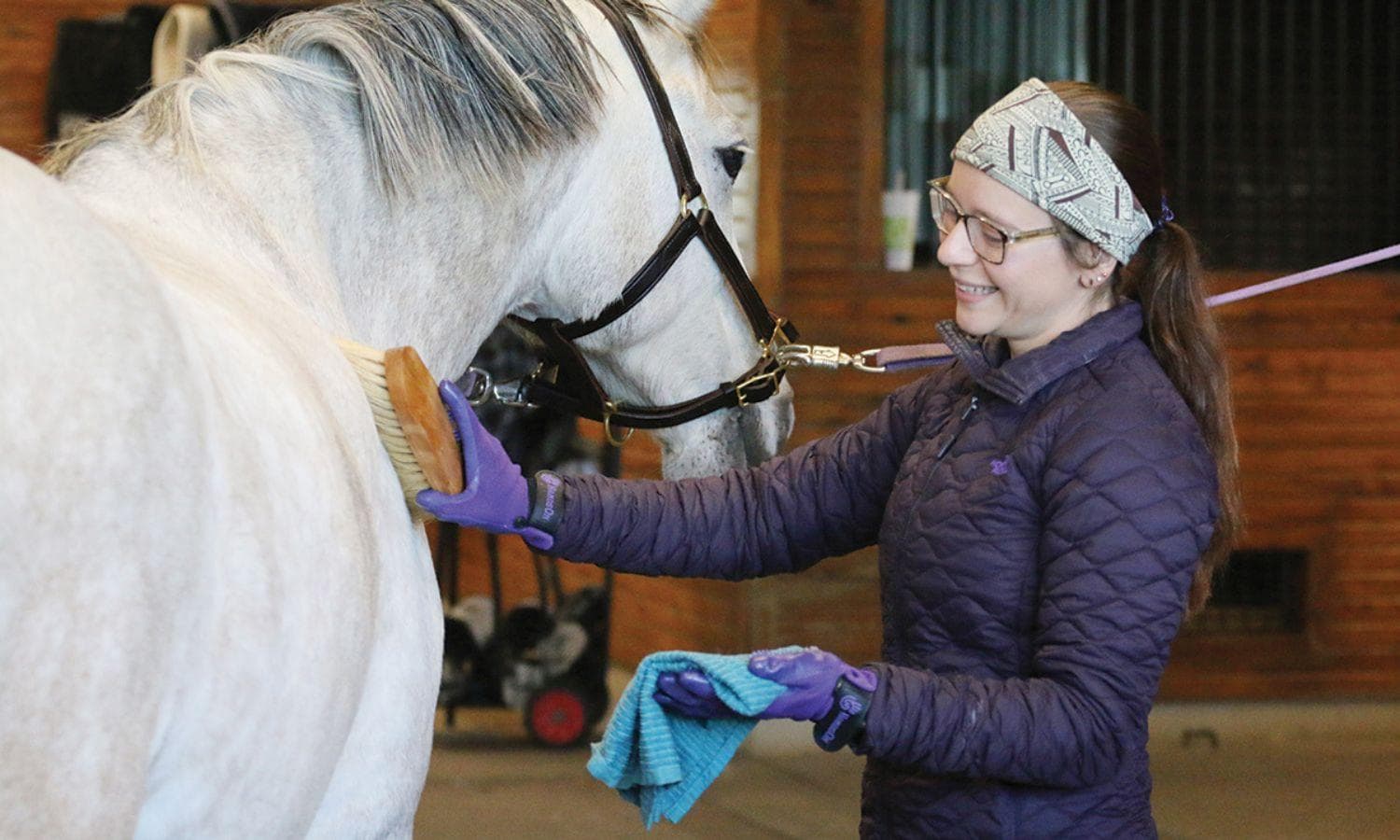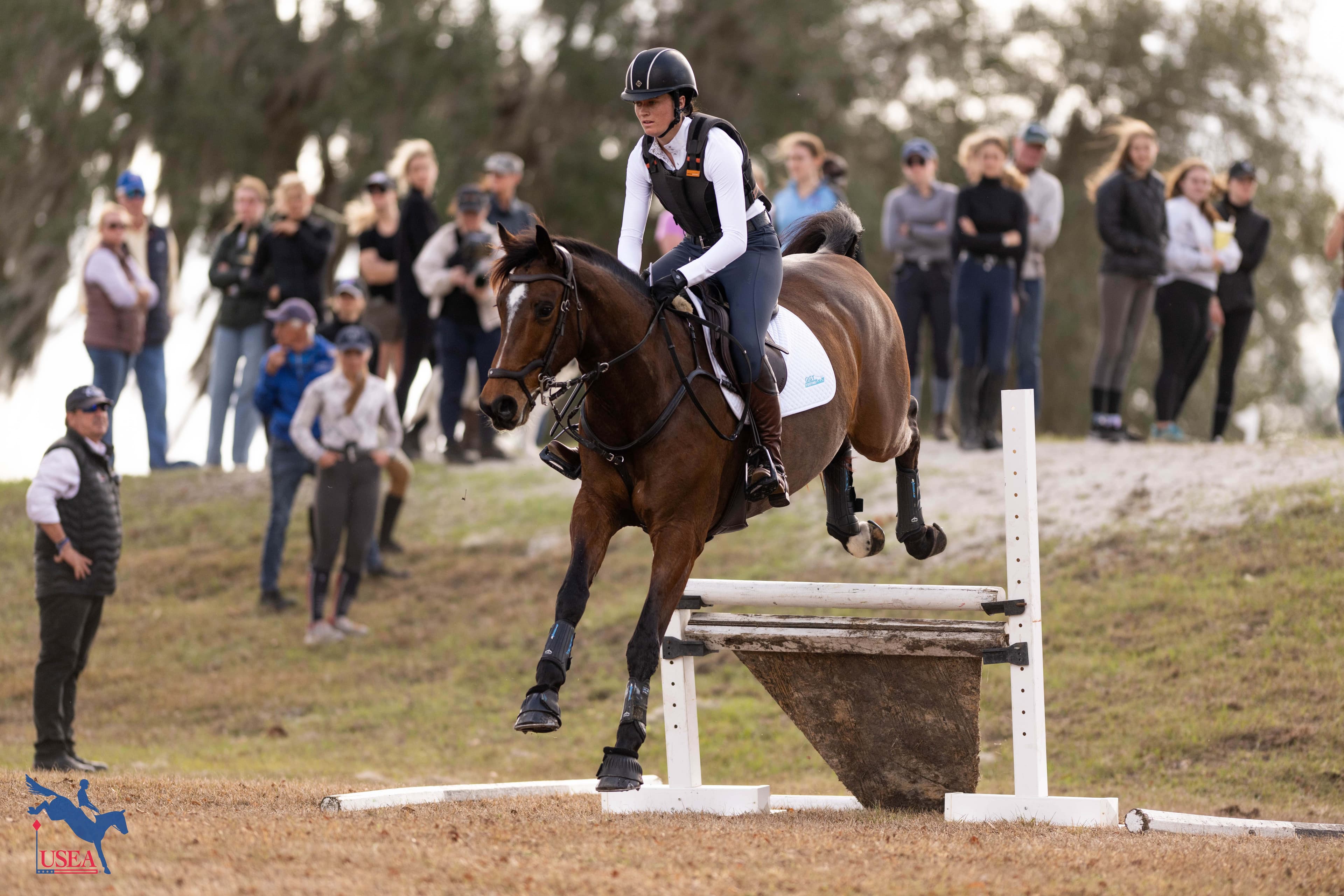Strengthening Straightness, Balance, Seat, Bend, Elasticity, and Positioning During Day One of the Holly Hill EA21 Regional Clinic

The USEA Emerging Athlete (EA21) Central Clinic at Holly Hill Farm in Benton, Louisiana began on August 1. US-based Australian eventer and USEA ICP level V certified instructor Rebecca “Bec” Braitling and twelve pre-selected USEA eventers came together to utilize the power of coaching and a willingness of participants to learn and improve with the goal of progressing toward a promising future as event riders.
Day one of the Regional Clinic began with a lecture about the significance of several important concepts. Braitling emphasized that the focus of laser precision basics on the flat has a progressive foundational effect on what is to come and can be used as a stepping stone into the future. She reiterated, "it is a long process but you can make it work if you know your goals and how you are going to achieve those goals.” Braitling says the “how” is the use of consistent basic cues and can be applied to any horse beyond the ones in the clinic. Additionally, she said, besides consistent cues, “a big rider focus is being in touch with your body and learning to manage the emotional aspects of competing.” Stephanie Reimirs, the Area V Young Rider Coordinator, went over the criteria of how participants were chosen for this clinic and how riders will be selected for the EA21 National Camp which will take place in early 2022 and be coached by EA21 Director of Coaching, David O'Connor. Reimers emphasized, "you are being judged every moment. This is not just for riding but everything you do including horse care and such.”
As the clinic began Braitling used observation during the routine group warm-ups in order to obtain an objective baseline assessment of riders. She then determined individualized movements within the parameters of the basics to strengthen specific skill areas. Straightness, balance, seat, bending, elasticity, and positioning are all important skills that were emphasized. Orange mini cones, as visual aids, were used to help navigate riders smoothly within their circles or leg yields down the arena and were helpful to ensure more concise purposeful movements for where the rider was going.
Participants rode in six instructional groups of two to work on the flatwork exercises. First up in the groups were Kelsey Seidel and Camryn Chung. Seidel and Chung's lessons focused on finding their balance with a focus on all four feet of the horse. They also worked on controlling the tempo of the ride with encouragement from Braitling to “slow the trot with your seat during posting.” Seidel feels she will work on the things she can control, “like being mindful and asking the right way.”
In the second group were Maya Clarkson and Daly Duarte who continued the work of the previous group. They used balance and controlled the tempo while increasing connection all the while being light with the hands. Braitling suggested they use a numerical one-two metronome rhythm and bending of the knees with relaxed thighs that created a slow methodical post. Duarte commented, “It’s harder sometimes with my long legs. When she told me to bend my knees it instantly felt better and I could use my legs more properly.” They then linked suppleness with canter exercises all the while being cognizant of the importance of position and the seat.
Michaela Frye and Katherine Hyndman made up the third group of riders. These riders identified a line and began to feel each hind leg as it took a step on that line. Shoulder fore was used and helped with connection which set the tone for the horse to accept the bit. Riders used the inside leg placed at the girth and flexion to the outside which aided circling with the horse able to more effectively and wrap around. Fry said, “ I worked hard on my position and holding my shoulders and elbows square.” Hyndman worked on intent, reflecting, “I will work with some small cones like Bec had here, and anytime I lose my intent I will bring it back to focus and improve the small details”.
The riders in the fourth group, Jhett Jenkins and Scarlett Peinado, used position from the seat - not the reins because seat aid influences the way a horse moves. “At home, we can get a little lazy, and staying present with intent is helpful," commented Jenkins. Braitling reiterated that a prime goal in riding is tempo using balance and connection to ride what’s underneath you and not get too far ahead. “I really learned that I cannot let myself go into autopilot," shared Peinado. "I need to focus on my shoulders and where my hands are. I also need to focus on my tempo and balance because I tend to get ahead of myself and not focus on where we are“.

It was all about elasticity and putting weight in the reins to equal connection for Camdyn Rahe and Maia Ramberg. Braitling encouraged these and all riders to continue to work on things that can be controlled. For instance, focusing on the line or bending knees into the halt instead of leaning back. She stated, "with horses, there needs to be a 'let’s talk about it' mindset” even though it seems counterintuitive as competitors. Looking back on day one, Ramberg shared: “I learned so much about how I can change myself and ride more effectively," while Rahe felt that one of the greatest lessons learned, among other things, was how to use her body to help her horse come up in his poll.
Hadley Bruce and Ava Staton made up the final group of riders to take on the day. There was a continued emphasis on seat position, balance, tempo, and shoulder-fore when riding specifically with transitions. Bruce said, “I had a really great ride and the shoulder-fore helped a ton during transitions with the tightness that my horse had through his shoulders.” Ava stated that “being lighter with her connection is one of her first takeaways that had an effect on her horse’s ability to bend.”
At the end of the day, all of the riders felt as though they had improved their riding abilities that will take them into their future. The focus on flatwork on the first day of the clinic appears to have been a great stepping stone toward progressing through the performance pathway of eventing. Tomorrow's focus will be on show jumping and will allow riders to apply today’s learning and mesh the two phases together.
The remaining EA21 Regional Clinics are scheduled as follows:
West Coast I – Aspen Farms (Yelm, Wash.) | August 15-16, 2022 | Coached by Rebecca Brown.
West Coast II – Twin Rivers Ranch (Paso Robles, Calif.) | August 17-18, 2022 | Coached by Rebecca Brown.
For more information on the EA21 Regional Clinics, click here.
























